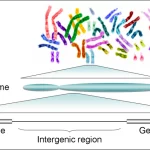
Bioinformatics definition
November 5, 2018Synonyms: Related: Computational Biology, Computational Molecular Biology, Biocomputing
“Classical” bioinformatics:
Fredj Tekaia at the Institut Pasteur offers this definition of bioinformatics:
“The mathematical, statistical and computing methods that aim to solve biological problems using DNA and amino acid sequences and related information.
There are other fields-for example medical imaging / image analysis which might be considered part of bioinformatics. There is also a whole other discipline of biologically-inspired computation; genetic algorithms, AI, neural networks. Often these areas interact in strange ways. Neural networks, inspired by crude models of the functioning of nerve cells in the brain, are used in a program called PHD to predict, surprisingly accurately, the secondary structures of proteins from their primary sequences. What almost all bioinformatics has in common is the processing of large amounts of biologically-derived information, whether DNA sequences or breast X-rays.
- Bioinformatics or computational biology is the use of mathematical and informational techniques, including statistics, to solve biological problems, usually by creating or using computer programs, mathematical models or both. One of the main areas of bioinformatics is the data mining and analysis of the data gathered by the various genome projects. Other areas are sequence alignment, protein structure prediction, systems biology, protein-protein interactions and virtual evolution.
(source: www.answers.com) - Bioinformatics is the science of developing computer databases and algorithms for the purpose of speeding up and enhancing biological research. (source: www.whatis.com)
- As a discipline that builds upon computational biology, bioinformatics encompasses the development and application of data-analytical and theoretical methods, mathematical modeling and computational simulation techniques to the study of biological, behavioral, and social systems.
As a discipline that builds upon the life, health, and medical sciences, bioinformatics supports medical informatics; gene mapping in pedigrees and population studies; functional-, structural-, and pharmaco-genomics; proteomics, and dozens of other evolving ��omics.�
As a discipline that builds upon the basic sciences, bioinformatics depends on a strong foundation of chemistry, biochemistry, biophysics, biology, genetics, and molecular biology which allows interpretation of biological data in a meaningful context.
As a discipline whose core is mathematics and statistics, bioinformatics applies these fields in ways that provide insight to make the vast, diverse, and complex life sciences data more understandable and useful, to uncover new biological insights, and to provide new perspectives to discern unifying principles. In short, bioinformaticists bring a multidisciplinary perspective to many of the critical problems facing the health-science profession today. - “Biologists using computers, or the other way around. Bioinformatics is more of a tool than a discipline.(source: An Understandable Definition of Bioinformatics , The O’Reilly Bioinformatics Technology Conference, 2003) (4)
- The application of computer technology to the management of biological information. Specifically, it is the science of developing computer databases and algorithms to facilitate and expedite biological research.(source: Webopedia)
- Bioinformatics: a combination of Computer Science, Information Technology and Genetics to determine and analyze genetic information. (Definition from BitsJournal.com)
- Bioinformatics is the application of computer technology to the management and analysis of biological data. The result is that computers are being used to gather, store, analyse and merge biological data.(EBI – 2can resource)
- bioinformatics refers to database-like activities, involving persistent sets of data that are maintained in a consistent state over essentially indefinite periods of time;
- computational biology encompasses the use of algorithmic tools to facilitate biological analyses; while
- bioinformation infrastructure comprises the entire collective of information management systems, analysis tools and communication networks supporting biology.Thus, the latter may be viewed as a computational scaffold of the former two.
Bioinformatics has become a mainstay of genomics, proteomics, and all other *.omics (such as phenomics) that many information technology companies have entered the business or are considering entering the business, creating an IT (information technology) and BT (biotechnology) convergence.
A bioinformaticist is an expert who not only knows how to use bioinformatics tools, but also knows how to write interfaces for effective use of the tools.
A bioinformatician , on the other hand, is a trained individual who only knows to use bioinformatics tools without a deeper understanding.
Thus, a bioinformaticist is to *.omics as a mechanical engineer is to an automobile. A bioinformatician is to *.omics as a technician is to an automobile.
- Computational Biology: The development and application of data-analytical andtheoretical methods, mathematical modeling and computational simulation techniquesto the study of biological, behavioral, and social systems.
- Genomics: Genomics is any attempt to analyze or compare the entire genetic complement of a species or species (plural). It is, of course possible to compare genomes by comparing more-or-less representative subsets of genes within genomes.
- Proteomics: Proteomics is the study of proteins – their location, structure and function. It is the identification, characterization and quantification of all proteins involved in a particular pathway, organelle, cell, tissue, organ or organism that can be studied in concert to provide accurate and comprehensive data about that system.
Proteomics is the study of the function of all expressed proteins. The study of the proteome, called proteomics, now evokes not only all the proteins in any given cell, but also the set of all protein isoforms and modifications, the interactions between them, the structural description of proteins and their higher-order complexes, and for that matter almost everything ‘post-genomic’.” (5) - Pharmacogenomics : Pharmacogenomics is the application of genomic approaches and technologies to the identification of drug targets. In Short, pharmacogenomics is using genetic information to predict whether a drug will help make a patient well or sick. It Studies how genes influence the response of humans to drugs, from the population to the molecular level.
- Pharmacogenetics: Pharmacogenetics is the study of how the actions of and reactions to drugs vary with the patient’s genes. All individuals respond differently to drug treatments; some positively, others with little obvious change in their conditions and yet others with side effects or allergic reactions. Much of this variation is known to have a genetic basis. Pharmacogenetics is a subset of pharmacogenomics which uses genomic/bioinformatic methods to identify genomic correlates, for example SNPs (Single Nucleotide Polymorphisms), characteristic of particular patient response profiles and use those markers to inform the administration and development of therapies. Strikingly such approaches have been used to “resurrect” drugs thought previously to be ineffective, but subsequently found to work with in subset of patients or in optimizing the doses of chemotherapy for particular patients.
- Cheminformatics: ‘The mixing of those information resources [information technology and information management] to transform data into information and information into knowledge for the intended purpose of making better decisions faster in the arena of drug lead identification and optimization.’ (Frank K Brown ‘Chemoinformatics: what is it and how does it impact drug discovery.’ Ann. Rep. Med. Chem. 1998, 33 , 375-384.) (6)
Related terms of cheminformatics are chemi-informatics, chemometrics, computational chemistry, chemical informatics, chemical information management/science, and cheminformatics.
But we can distinguish chemoinformatics and chemical informatics as follows
Chemical informatics : ‘Computer-assisted storage, retrieval and analysis of chemical information, from data to chemical knowledge.’ ( Chem. Inf. Lett. 2003, 6 , 14.) This definition is distinct from ‘ Chemoinformatics ‘ (and the synonymous cheminformatics and chemiinformatics) which focus on drug design.
chemometrics: The application of statistics to the analysis of chemical data (from organic, analytical or medicinal chemistry) and design of chemical experiments and simulations. [IUPAC Computational]
computational chemistry : A discipline using mathematical methods for the calculation of molecular properties or for the simulation of molecular behavior. It also includes, e.g., synthesis planning, database searching, combinatorial library manipulation (Hopfinger, 1981; Ugi et al., 1990). [IUPAC Computational] - Structural genomics or structural bioinformatics refers to the analysis of macromolecular structure particularly proteins , using computational tools and theoretical frameworks. One of the goals of structural genomics is the extension of idea of genomics , to obtain accurate three-dimensional structural models for all known protein families, protein domains or protein folds . Structural alignment is a tool of structural genomics.
- Comparative genomics: The study of human genetics by comparisons with model organisms such as mice, the fruit fly, and the bacterium E. coli .
- Biophysics:The British Biophysical Society defines biophysics as: “an interdisciplinary field which applies techniques from the physical sciences to understanding biological structure and function”.
- Biomedical informatics / Medical informatics: “Biomedical Informatics is an emerging discipline that has been defined as the study, invention, and implementation of structures and algorithms to improve communication, understanding and management of medical information.”
- Mathematical Biology: Mathematical biology also tackles biological problems, but the methods it uses to tackle them need not be numerical and need not be implemented in software or hardware. It includes things of theoretical interest which are not necessarily algorithmic, not necessarily molecular in nature, and are not necessarily useful in analyzing collected data.
- Computational chemistry: Computational chemistry is the branch of theoretical chemistry whose major goals are to create efficient computer programs that calculate the properties of molecules (such as total energy, dipole moment, vibrational frequencies) and to apply these programs to concrete chemical objects. It is also sometimes used to cover the areas of overlap between computer science and chemistry.
- Functional genomics: Functional genomics is a field of molecular biology that is attempting to make use of the vast wealth of data produced by genome sequencing projects to describe genome function. Functional genomics uses high-throuput techniques like DNA microarrays, proteomics, metabolomics and mutation analysis to describe the function and interactions of genes.
- Pharmacoinformatics: Pharmacoinformatics concentrates on the aspects of bioinformatics dealing with drug discovery
- In silico ADME-Tox Prediction:(Brief description)- Drug discovery is a complex and risky treasure hunt to find the most efficacious molecule which do not have toxic effects but at the same time have desired pharmacokinetic profile. The hunt starts when the researchers look for the binding affinity of the molecule to its target. Huge amount of research requires to be done to come out with a molecule which has the reliable binding profile. Once the molecules have been identified, as per the traditional methodologies, the molecule is further subjected to optimization with the aim of improving efficacy. The molecules which show better binding is then evaluated for its toxicity and pharmacokinetic profiles. It is at this stage that most of the candidates fail in the race to become a successful drug.
- Agroinformatics / Agricultural informatics: Agroinformatics concentrates on the aspects of bioinformatics dealing with plant genomes.
- Systems biology:Systems biology is the coordinated study of biological systems by investigating the components of cellular networks and their interactions,by applying exprerimental high-throughput and whole-genome techniques, and integrating computational methods with experiemntal efforts.














